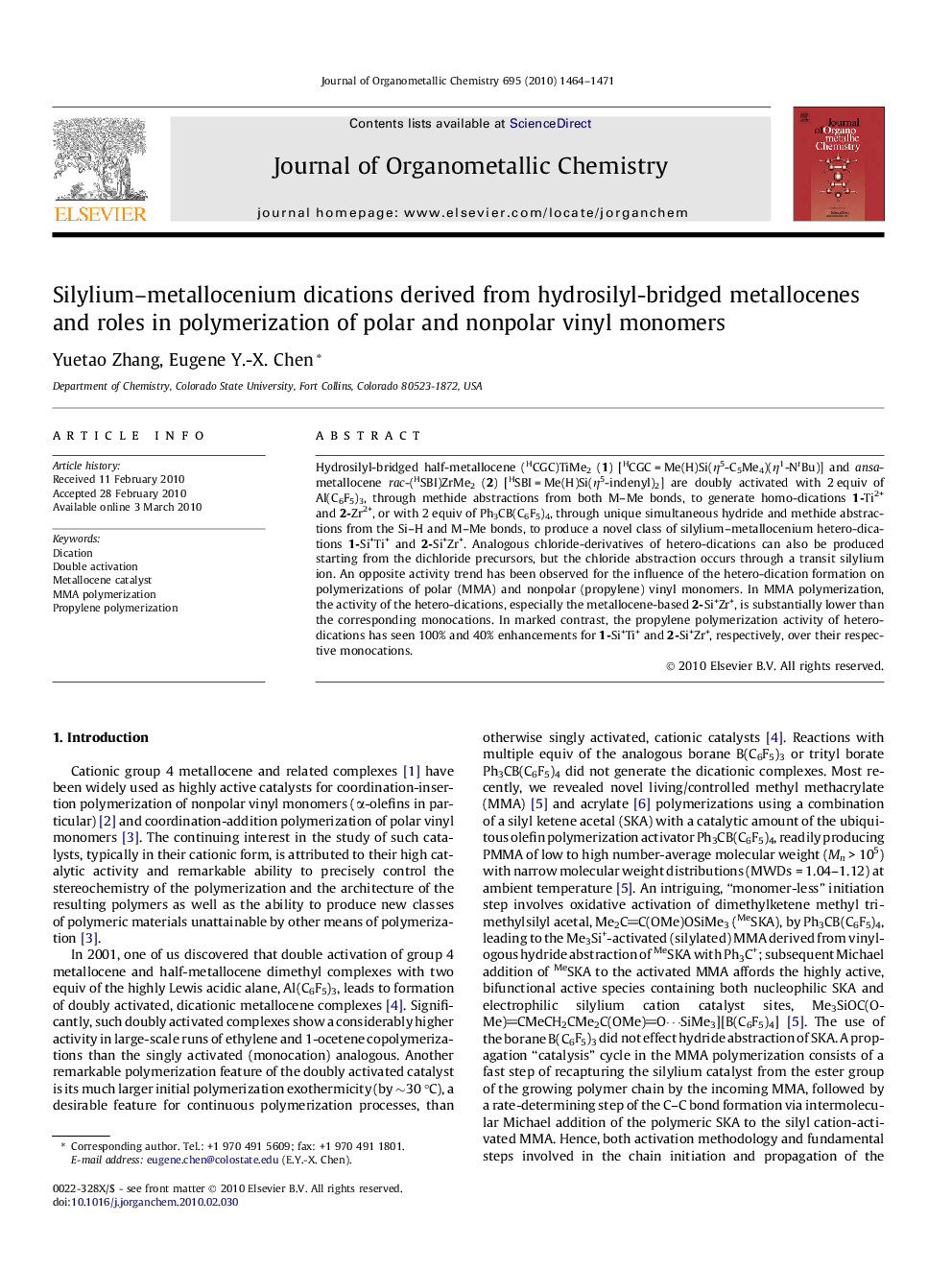| Article ID | Journal | Published Year | Pages | File Type |
|---|---|---|---|---|
| 1325868 | Journal of Organometallic Chemistry | 2010 | 8 Pages |
Hydrosilyl-bridged half-metallocene (HCGC)TiMe2 (1) [HCGC = Me(H)Si(η5-C5Me4)(η1-NtBu)] and ansa-metallocene rac-(HSBI)ZrMe2 (2) [HSBI = Me(H)Si(η5-indenyl)2] are doubly activated with 2 equiv of Al(C6F5)3, through methide abstractions from both M–Me bonds, to generate homo-dications 1-Ti2+ and 2-Zr2+, or with 2 equiv of Ph3CB(C6F5)4, through unique simultaneous hydride and methide abstractions from the Si–H and M–Me bonds, to produce a novel class of silylium–metallocenium hetero-dications 1-Si+Ti+ and 2-Si+Zr+. Analogous chloride-derivatives of hetero-dications can also be produced starting from the dichloride precursors, but the chloride abstraction occurs through a transit silylium ion. An opposite activity trend has been observed for the influence of the hetero-dication formation on polymerizations of polar (MMA) and nonpolar (propylene) vinyl monomers. In MMA polymerization, the activity of the hetero-dications, especially the metallocene-based 2-Si+Zr+, is substantially lower than the corresponding monocations. In marked contrast, the propylene polymerization activity of hetero-dications has seen 100% and 40% enhancements for 1-Si+Ti+ and 2-Si+Zr+, respectively, over their respective monocations.
Graphical abstractHydrosilyl-bridged half-metallocene (HCGC)TiMe2 and metallocene rac-(HSBI)ZrMe2 enable access to a novel class of silylium–metallocenium hetero-dications that show an opposite activity trend in polymerizations of MMA and propylene.Figure optionsDownload full-size imageDownload as PowerPoint slide
